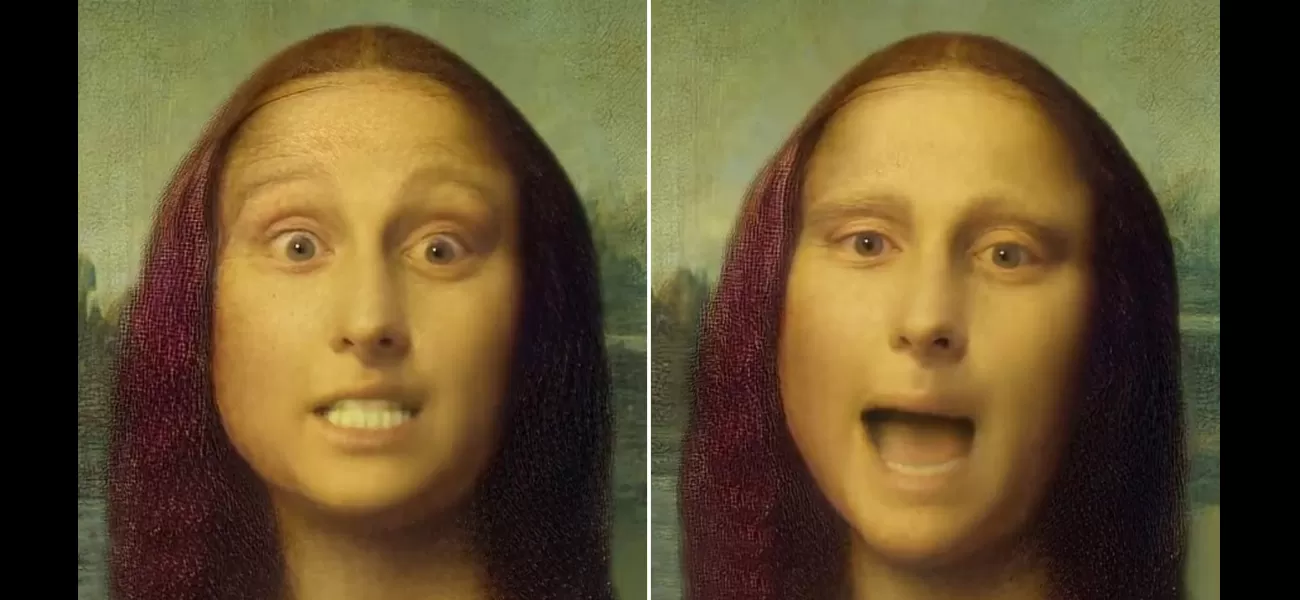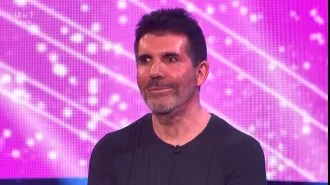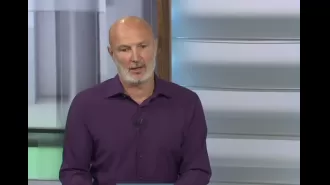Microsoft's latest video featuring the Mona Lisa has sparked mixed reactions.
A surprising video.
April 22nd 2024.

Artificial intelligence (AI) has been making strides in creating some spooky videos. Recently, Microsoft released a video featuring the Mona Lisa rapping, which has left some viewers feeling creeped out. The tech giant unveiled a new AI model that can take a still image of a face and combine it with an audio clip of someone speaking, creating a nearly seamless animation.
In the video, researchers demonstrate how they used the AI Model VASA-1 to bring the Mona Lisa to life and have her perform a comedic rap by Anne Hathaway. The result was both impressive and unsettling for many, with some taking to social media to express their mixed emotions. One user, Nikita Lebedev, shared, "This is wild, freaky, and creepy all at once," while another, Travis C Porco, stated, "I think this rapping Mona Lisa has swizzled my temporal lobes."
However, not everyone was disturbed by this new technology. Some praised Microsoft for its innovation and eagerly awaited more incredible creations from the VASA-1 AI. Ryan Lazuka wrote, "Can't wait to see more incredible creations from Microsoft's VASA-1 AI," while Poonam Soni described it as "scary good."
Despite the mixed reactions, Microsoft has cautioned about the potential dangers of such technology. The company acknowledges that the AI could be misused for impersonating humans, which is why they have decided not to release the demo to the public. In a blog post, the team stated, "Our premiere model, VASA-1, is capable of not only producing lip movements that are exquisitely synchronized with the audio but also capturing a large spectrum of facial nuances and natural head motions that contribute to the perception of authenticity and liveliness." They also added, "We have no plans to release an online demo, API, product, additional implementation details, or any related offerings until we are certain that the technology will be used responsibly and in accordance with proper regulations."
Microsoft trained the AI using videos of people speaking, teaching it to recognize natural face and head movements such as lip motion, facial expressions, eye gaze, and blinking. However, the end result is more like a still photo that has been animated to move. The AI can also create videos where the subject is looking in a specific direction or expressing particular emotions. While the videos are impressively realistic, there are still signs that they have been AI-generated, such as infrequent blinking and exaggerated facial movements.
Despite these limitations, Microsoft believes that its model surpasses previous methods and can pave the way for real-time interactions with lifelike human avatars. This is not the first time the tech giant has developed something that has sparked controversy. In 2021, Microsoft patented an AI chatbot that would allow users to communicate with past or present "entities," such as friends, relatives, fictional or historical figures. However, the product was never released and was even criticized as "disturbing" by Tim O'Brien, the former general manager of AI programs at Microsoft.
In the video, researchers demonstrate how they used the AI Model VASA-1 to bring the Mona Lisa to life and have her perform a comedic rap by Anne Hathaway. The result was both impressive and unsettling for many, with some taking to social media to express their mixed emotions. One user, Nikita Lebedev, shared, "This is wild, freaky, and creepy all at once," while another, Travis C Porco, stated, "I think this rapping Mona Lisa has swizzled my temporal lobes."
However, not everyone was disturbed by this new technology. Some praised Microsoft for its innovation and eagerly awaited more incredible creations from the VASA-1 AI. Ryan Lazuka wrote, "Can't wait to see more incredible creations from Microsoft's VASA-1 AI," while Poonam Soni described it as "scary good."
Despite the mixed reactions, Microsoft has cautioned about the potential dangers of such technology. The company acknowledges that the AI could be misused for impersonating humans, which is why they have decided not to release the demo to the public. In a blog post, the team stated, "Our premiere model, VASA-1, is capable of not only producing lip movements that are exquisitely synchronized with the audio but also capturing a large spectrum of facial nuances and natural head motions that contribute to the perception of authenticity and liveliness." They also added, "We have no plans to release an online demo, API, product, additional implementation details, or any related offerings until we are certain that the technology will be used responsibly and in accordance with proper regulations."
Microsoft trained the AI using videos of people speaking, teaching it to recognize natural face and head movements such as lip motion, facial expressions, eye gaze, and blinking. However, the end result is more like a still photo that has been animated to move. The AI can also create videos where the subject is looking in a specific direction or expressing particular emotions. While the videos are impressively realistic, there are still signs that they have been AI-generated, such as infrequent blinking and exaggerated facial movements.
Despite these limitations, Microsoft believes that its model surpasses previous methods and can pave the way for real-time interactions with lifelike human avatars. This is not the first time the tech giant has developed something that has sparked controversy. In 2021, Microsoft patented an AI chatbot that would allow users to communicate with past or present "entities," such as friends, relatives, fictional or historical figures. However, the product was never released and was even criticized as "disturbing" by Tim O'Brien, the former general manager of AI programs at Microsoft.
[This article has been trending online recently and has been generated with AI. Your feed is customized.]
[Generative AI is experimental.]
0
0
Submit Comment





